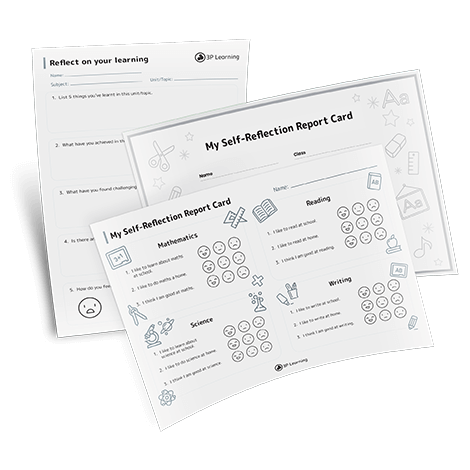
Student self assessment is crucial for helping students take control and ownership of their own learning as well as being a valuable tool to aid focus and goal setting. Introducing this to students early in the year is a great way to set a precedent, nurture their sense of responsibility and — lucky for us — save time in revisiting what knowledge summer melted away.
We’ve put together some fun and easy activities for your students to help you identify the learning gaps (without having to slog through extra marking).
Student-led classes
One of the best ways to reinforce and refresh learning is to teach what you know.
Get your students into groups and have them pick or pick from a pre-selected list of topics from last year. Have them design a short and fast lesson going over the topic and let them steer the thinking and learning.
This activity provides great insight into confidence levels (it turns out teaching isn’t as easy as it looks), so be sure to keep an eye on class leaders to see how they respond to questions and how they’re explaining the ‘what’ and ‘how’ of the lesson at hand.
Thumbs up/down
It’s a classic for good reasons: it’s simple, fast and doesn’t bring with it the intimidation of a test or exam. Better yet, it can be done anonymously so students can avoid potential embarrassment. However, while thumbs up/down can give you a quick overview of what knowledge might need some refinement or revisiting, it can’t give you a nuanced view of exactly where your students’ level of knowledge is. For that, it’s better to use …
Posters and mindmaps
Visualising knowledge is a fun, colourful, and creative way to let your students show how much they recall about their learning.
This can be done individually or in groups, and can be performed in a variety of ways:
- Draw what you remember about a topic
- Make a comic/cartoon representing a concept
- Create a mindmap linking different concepts or topics
When reviewing their posters and mindmaps, keep an eye out for common patterns. If certain gaps are appearing across multiple students, it might be time to revisit a concept.
Drop boxes
This is a great exit activity because students feel less threatened if they get to leave as soon as it’s done. To get the most out of drop-boxes, zone in on a specific topic or learning area to get into the nuts and bolts of your students’ understanding.
This activity can be done in one of three ways. Set up four different boxes indicating confidence levels. Students can simply write down a topic from last year and drop it into whichever box they choose for how they feel about that topic. You can also give students tokens that represent the topics for a slightly more fun variation.
Alternatively, depending on the number of topics you’re asking about, this activity can be done in reverse. The boxes can represent different topics while the tokens represent the confidence levels. This has the handy advantage of easily being able to see if the students are finding a topic challenging. Plus, students find it fun to feel like they are voting on the topics!
Student self assessment sheet and report cards
This is where you’re going to get a great level of detail from students. Your questions can be as general or as specific as you like, with your students’ answers giving you a fuller picture of how confident they feel.
For example:
“I understand and can explain the topic to others.”
“I understand and can work on this alone.”
“I understand but still need a little help.”
“I don’t understand — yet.”
These sheets can either be filled post-assessment or in-class while you review last year’s topics. For younger grades you can simplify things with an emoji-based sheet that has them select how they are feeling; older students can simply check off their confidence levels.
Another great way to use these sheets is in group work. Divide your students into groups and have them work through a review activity together. They can discuss how they felt about each topic and select a confidence level as a group. The advantage of this method is it gives you the chance to listen to your students, seeing how and where they’re succeeding or struggling with problems. For students, it’s a great opportunity for peer-to-peer learning, filling in one another’s gaps in prior knowledge in a fun, interactive, and low-stakes way.







